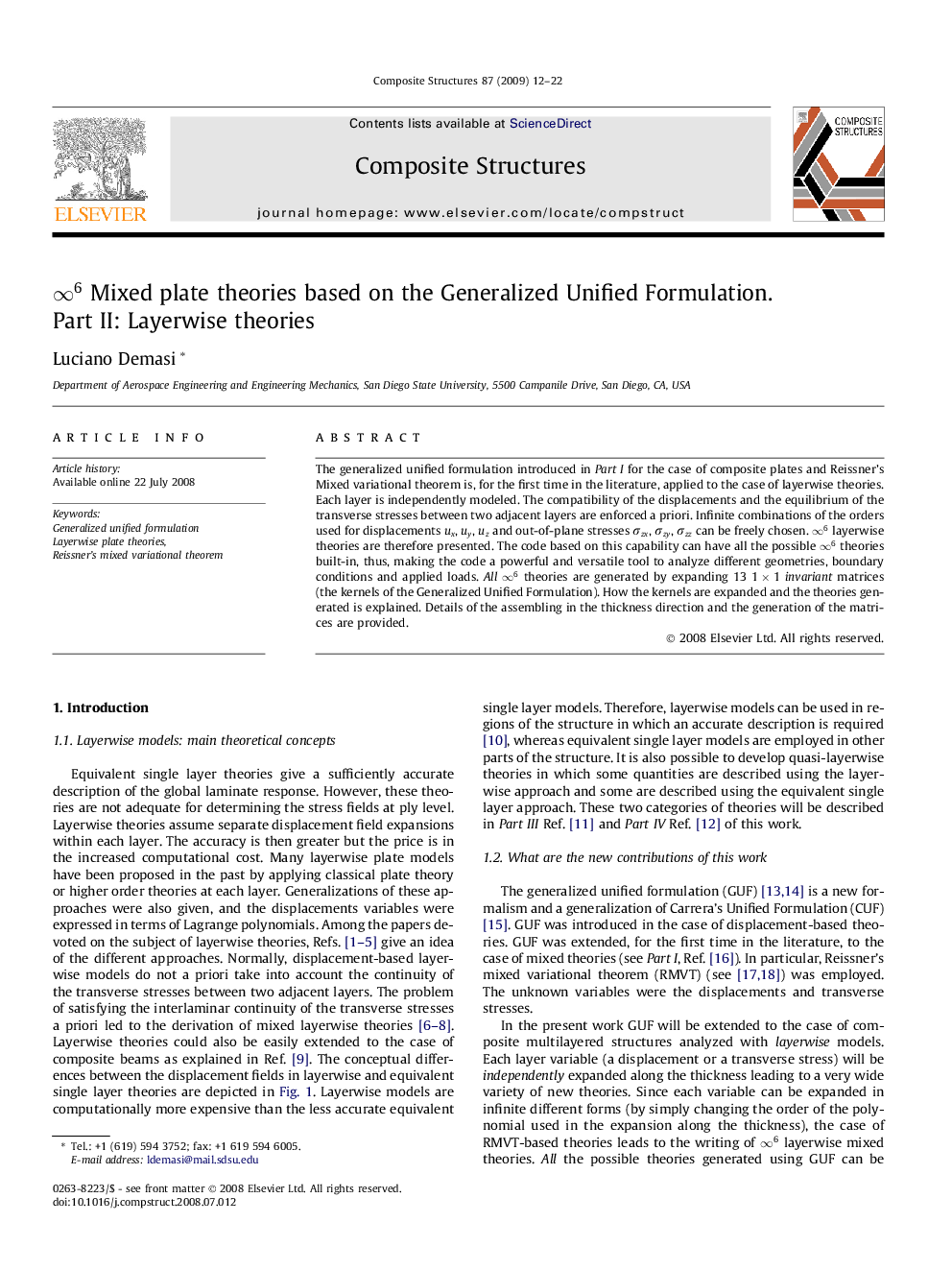| Article ID | Journal | Published Year | Pages | File Type |
|---|---|---|---|---|
| 253609 | Composite Structures | 2009 | 11 Pages |
The generalized unified formulation introduced in Part I for the case of composite plates and Reissner’s Mixed variational theorem is, for the first time in the literature, applied to the case of layerwise theories. Each layer is independently modeled. The compatibility of the displacements and the equilibrium of the transverse stresses between two adjacent layers are enforced a priori. Infinite combinations of the orders used for displacements uxux, uyuy, uzuz and out-of-plane stresses σzxσzx, σzyσzy, σzzσzz can be freely chosen. ∞6∞6 layerwise theories are therefore presented. The code based on this capability can have all the possible ∞6∞6 theories built-in, thus, making the code a powerful and versatile tool to analyze different geometries, boundary conditions and applied loads. All ∞6∞6 theories are generated by expanding 13 1×11×1invariant matrices (the kernels of the Generalized Unified Formulation). How the kernels are expanded and the theories generated is explained. Details of the assembling in the thickness direction and the generation of the matrices are provided.
